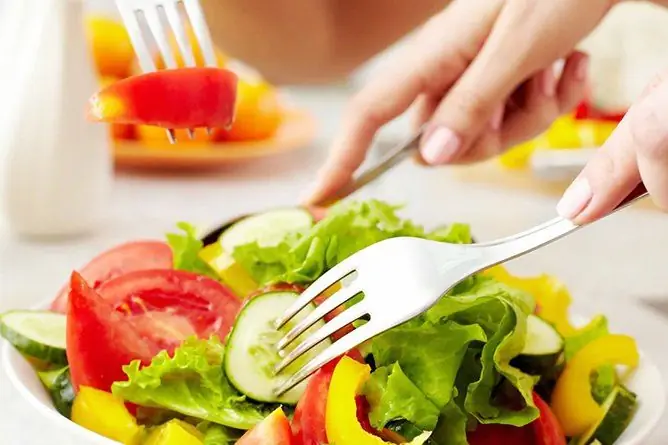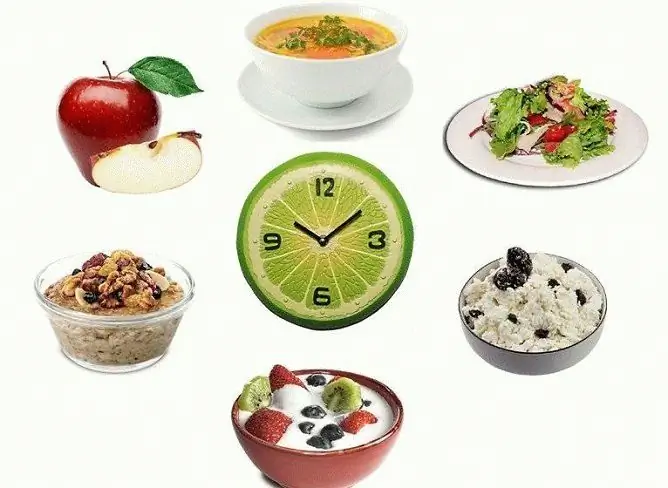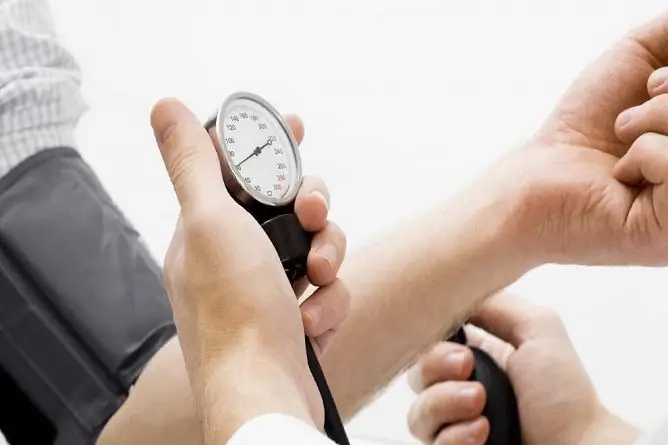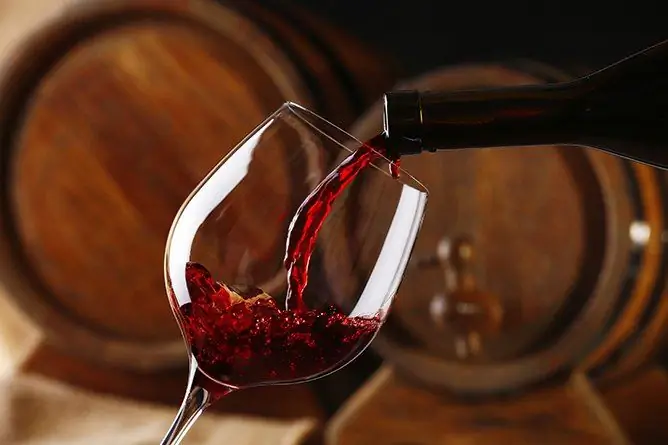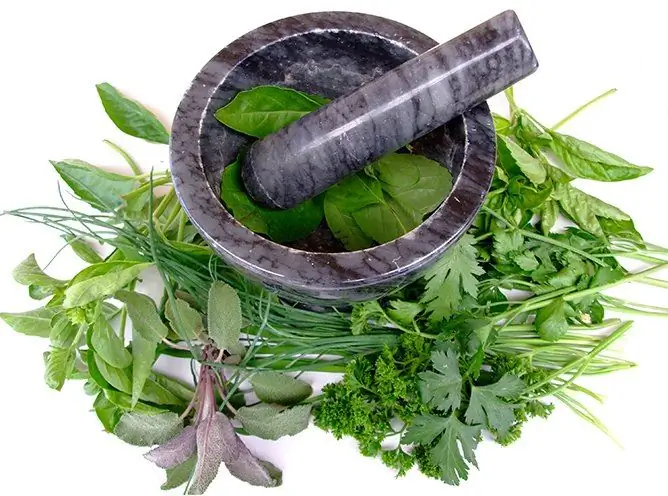- Author Rachel Wainwright [email protected].
- Public 2024-01-15 19:51.
- Last modified 2025-11-02 20:14.
Nutrition for hypertension: permitted and prohibited foods, catering for high blood pressure
The content of the article:
- How to eat for people with high blood pressure
- What to eat with hypertension
- What can you drink with hypertension
- Harmful products
- Substances required by the body for hypertension
- Video
Proper nutrition for hypertension is an important component of hypertension treatment. Compliance with a diet at an early stage of hypertension can reduce blood pressure in a person, making it possible to do without the use of drugs. At later stages, the diet cannot replace drug therapy, but it is necessarily included in the complex of therapeutic measures. The correct choice of food and adherence to the diet makes it possible to strengthen the heart muscle, the vascular wall, as well as control the level of blood pressure, therefore, doctors recommend adhering to it in order to prevent hypertension, and for patients with an already developed disease - to reduce the risk of a hypertensive crisis.

Nutrition with a tendency to hypertension should be aimed at improvement, and, if necessary, at weight loss
How to eat for people with high blood pressure
First of all, with high blood pressure, food intake should be observed - so it is better absorbed, and in addition, it allows you to normalize metabolism, which is often impaired in hypertensive patients, this is confirmed by the fact that in the vast majority of cases of hypertension obesity accompanies.
The optimal regimen is fractional meals - eating at least 5-6 times a day at regular intervals in small portions. In this case, a person gets used to gorge himself in small portions, and his body does not strive to save supplies for future use, which happens with irregular or rare meals (1-2 times a day).
With hypertension in combination with obesity, it is recommended to arrange fasting days once a week - kefir, fruit, vegetable or just water. In combination with fractional meals and a properly composed menu, this allows you to normalize body weight without resorting to diets with severe calorie restriction.
In addition to nutrition, you should improve your lifestyle in general. The patient needs to give up bad habits, be in the fresh air every day, move more, avoid stressful situations, if possible, establish a night's sleep, and also adhere to a reasonable regime of work and rest, allowing the body to recover.
Normalization of weight, rejection of bad habits, improvement of lifestyle can completely save a person from the manifestations of hypertension.
What to eat with hypertension
What foods can be consumed with hypertension and which cannot? Below is a list of foods that are recommended to be included in the diet, but since it is difficult to take into account all foods, general rules of healthy eating should be guided in their selection.
The main foods recommended for hypertension are:
- cereals: oatmeal, buckwheat, millet, brown rice;
- vegetables, fruits, berries, nuts, mushrooms;
- meat: beef, veal, turkey, lean chicken and pork;
- fish: any, fish of the northern seas is especially useful;
- seafood: any, especially shrimp and mussels;
- chicken eggs, quail;
- milk, dairy products, natural and without additives: cottage cheese, cheese, sour cream, kefir, yogurt, yogurt, fermented baked milk, etc.;
- vegetable oil;
- spices in small quantities.
It is recommended to cook vegetable, cereal and milk soups - with a low calorie content, they saturate well.
It is necessary to ensure that in the daily diet there are enough fresh vegetables and fruits - foods rich in fiber. Some of them have the ability to lower blood pressure. For example, from berries, lingonberries, cranberries, viburnum, chokeberry, black currants will be especially useful, from vegetables - leafy greens, especially spinach and parsley, from fruits - bananas, citrus fruits, apples, pears. Dried fruits are recommended - they contain trace elements that help normalize blood pressure, especially dried apricots, dates, prunes and raisins. It is healthy to eat nuts and seeds. However, it should be borne in mind that overweight people should limit the consumption of dried fruits, nuts and seeds.
When cooking, food should be boiled, stewed, baked or steamed, and some of the plant products should be eaten fresh, in salads.
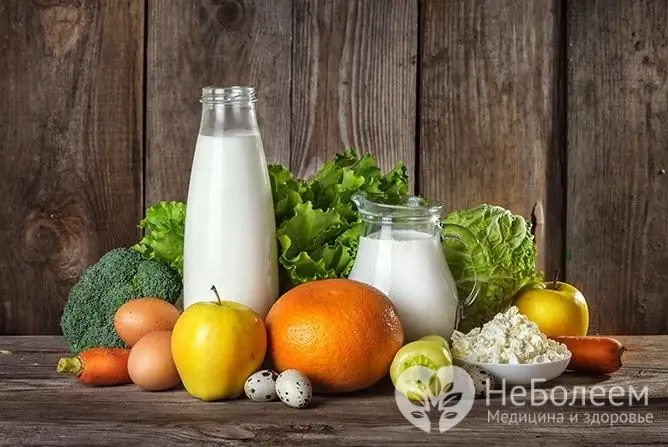
The basis of nutrition for hypertension is a dairy-plant diet
What can you drink with hypertension
First of all, it is recommended to drink water. Sometimes patients are limited to fluid intake so as not to cause an increase in blood pressure, but this is justified only during hypertensive crises, the rest of the time they should drink enough water to avoid dehydration and the accompanying deterioration of the rheological properties of the blood. In addition, it is recommended to drink black and green tea (in small quantities), natural juices, homemade fruit drinks and fruit drinks (especially from berries that lower blood pressure), hibiscus, rosehip tea. You can also use jelly, a decoction of wheat bran.
Often they use this recipe: 30 g of viburnum berries, currants and / or black chokeberry are poured with one and a half glasses of boiling water and insisted for 20 minutes. Take an infusion of 0.5 cups in the morning, afternoon and evening.
Decoctions and herbal infusions, which help to normalize blood pressure, have a beneficial effect on the cardiovascular system. So, if the pathology develops under the influence of constant stress, it is useful to regularly take an infusion of motherwort, valerian or other medicinal plants that have a sedative effect, which normalizes pressure.
With high blood pressure, you can prepare an infusion of valerian root, dill seeds and motherwort herb, which are mixed in equal proportions, after which about 25 g of the resulting mixture is poured with a glass of boiling water and infused for 20 minutes. Take an infusion of 0.5 cups twice a day.
Harmful products
It is necessary to exclude or significantly limit the use of table salt. With arterial hypertension of 1 degree, you need to consume no more than 7 g of salt per day, and nutrition for hypertension of 2 degrees implies limiting the amount of salt to 5 g per day maximum. The diet for grade 3 hypertension practically does not differ from that for grade 2. If it is not possible to completely abandon salt, you need to gradually reduce its use by adding it to ready-made dishes, and not during their preparation. To prevent food from appearing bland, you can use lemon juice, herbs and spices as seasonings (avoiding pungent and pungent ones).

Fatty, fried, containing a large amount of salt, sugar and additives are not recommended
Fatty, smoked, canned foods, sausages, fatty meats, lard, strong meat, fish and mushroom broths, industrial confectionery products, by-products, salted cheese, sweet soft drinks are prohibited for hypertension. Mayonnaise is banned (with the exception of a small amount of homemade mayonnaise), pickles and pickles, as well as fast food and all kinds of snacks (chips, flavored crackers, etc.).
It is necessary to stop drinking alcoholic beverages. Exception - in rare cases, it is allowed to drink a little (no more than 200 ml) of natural red wine.
Substances required by the body for hypertension
The table shows the main vitamins and minerals that contribute to the correction of high blood pressure.
| Name | What products contain | Daily rate |
| Vitamin A | Egg yolk, liver; carotene (provitamin A) - carrots, rose hips, spinach, pumpkin | 4-5 g |
| B vitamins | Egg yolk, buckwheat, oatmeal, legumes, nuts, milk, meat, fish, dates, dried apricots, prunes, parsley, blueberries, citrus fruits |
B 1 - 1.5-2.4 mg B 2 - 1.9-3.9 mg B 6 - 2.0-2.5 mg B 12 - 5 mcg |
| Vitamin C | Citrus fruits, black currants, kiwi, rose hips, tomatoes, onions, red peppers, broccoli, lettuce, cauliflower, Brussels sprouts, white cabbage | 500 mg |
| Vitamin D | Buckwheat, legumes, seeds, nuts, seaweed, cocoa | 0.3-0.5 g |
| Vitamin P | Buckwheat, green tea, dark beer, red wine, chokeberry, black currant | 50 mg |
| Potassium | Millet, potatoes, spinach, bananas, dried apricots, apple cider vinegar | 4-5 g |
| Calcium | Canned fish, dairy products, herbs, dried apricots, nuts, sesame | 1.0-1.2 g |
| Magnesium | Buckwheat, bread, nuts, seaweed, cocoa, seeds | 0.3-0.5 g |
| Iodine | Eggs, beef, sea fish, seafood, vegetables, fruits, herbs, mushrooms, seaweed | 100-150 mcg |
Video
We offer for viewing a video on the topic of the article.

Anna Aksenova Medical journalist About the author
Education: 2004-2007 "First Kiev Medical College" specialty "Laboratory Diagnostics".
Found a mistake in the text? Select it and press Ctrl + Enter.

